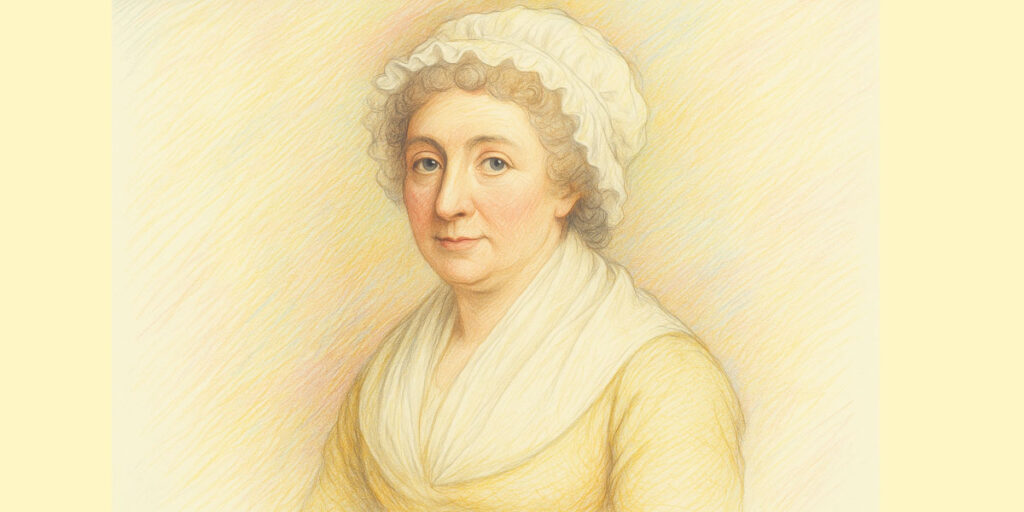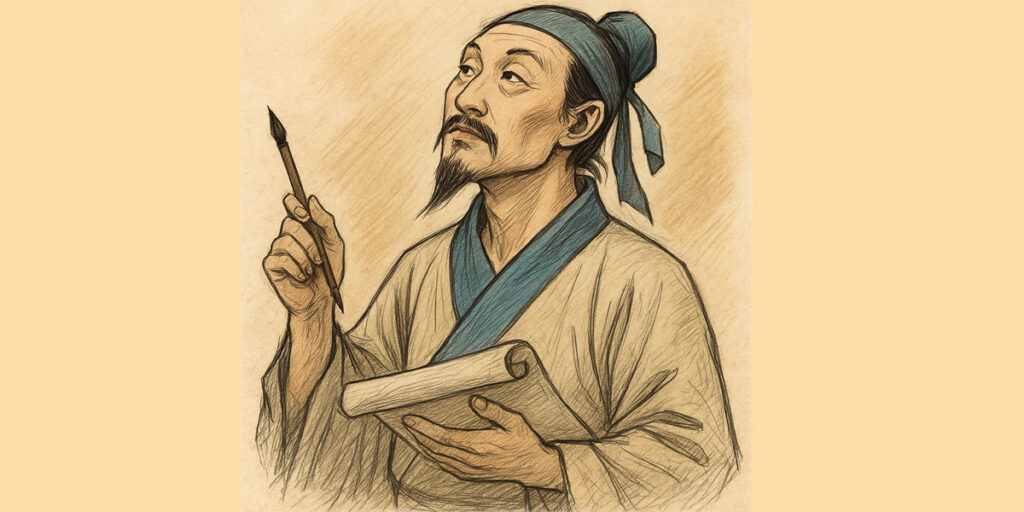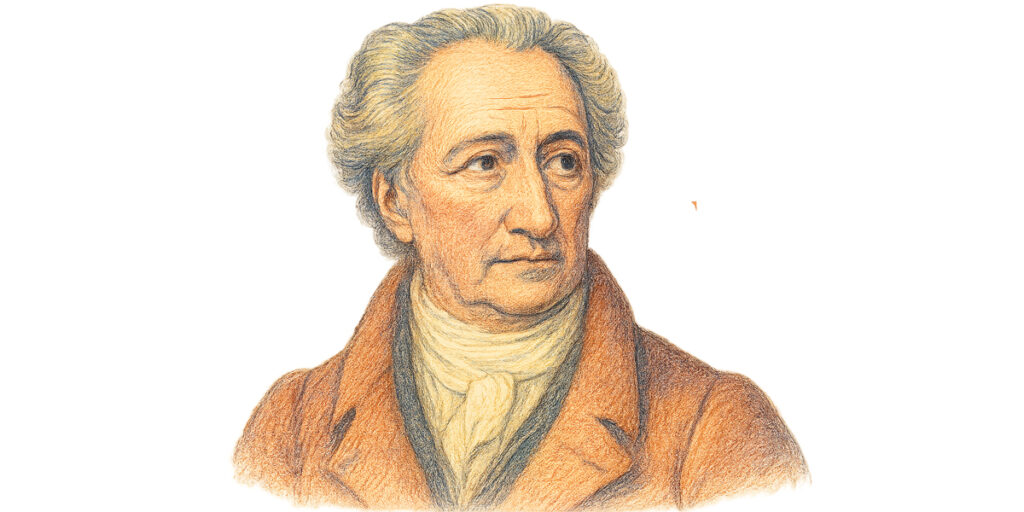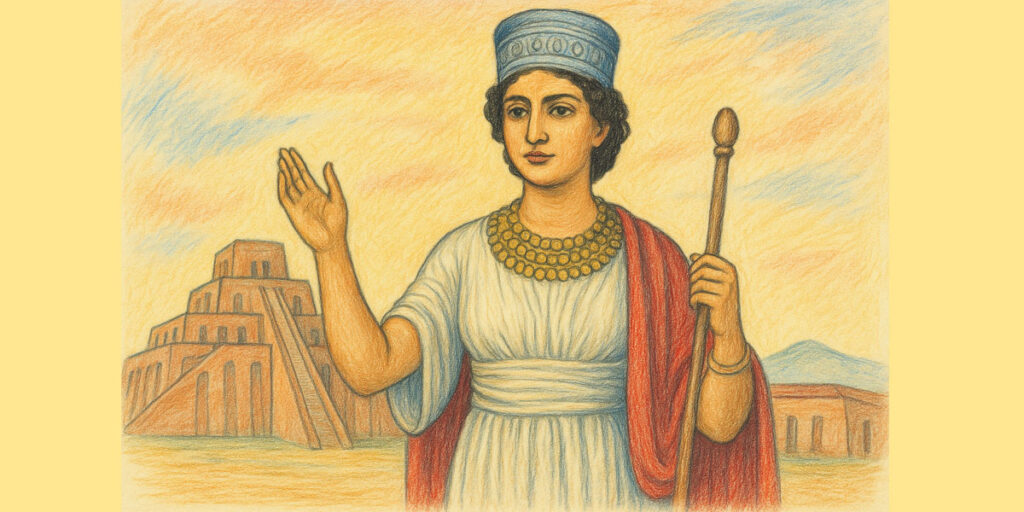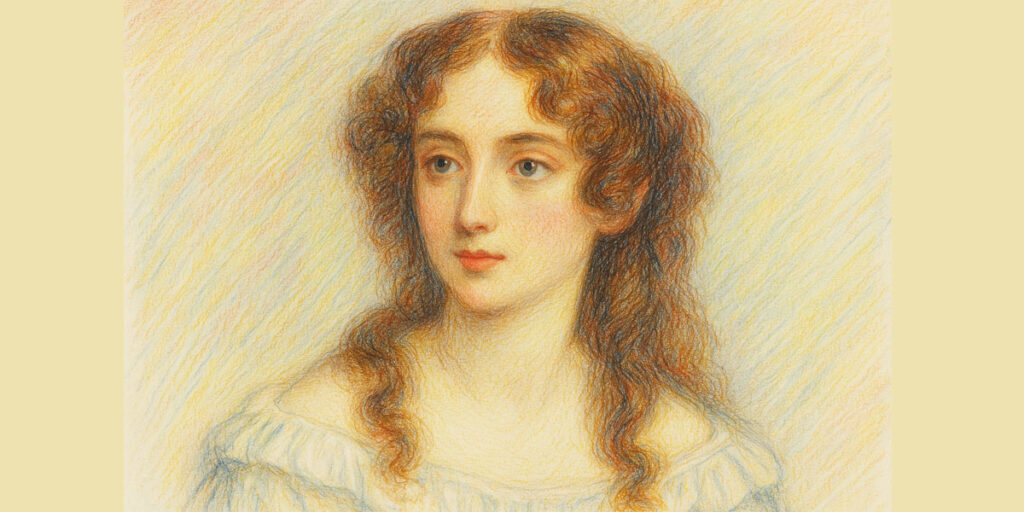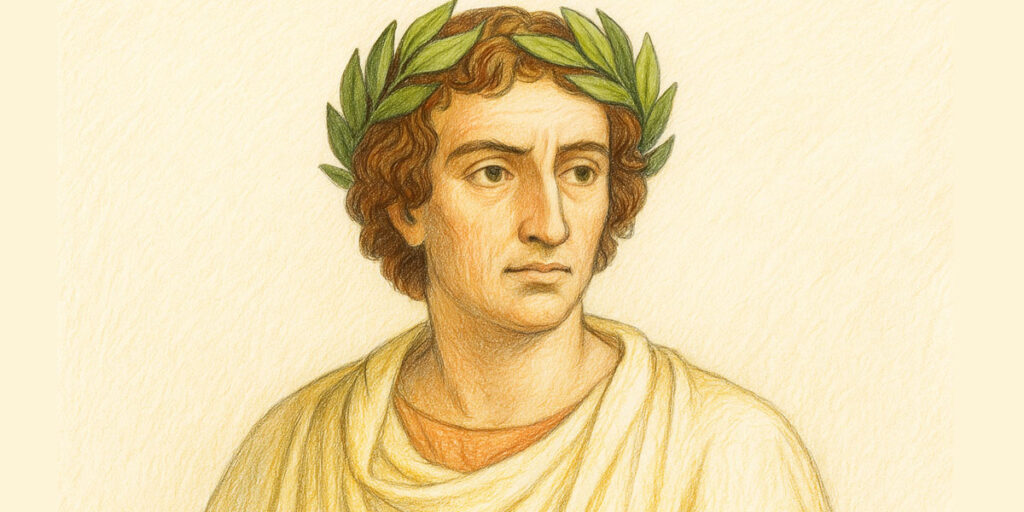Anna Laetitia Barbauld (1743–1825): A Trailblazer in Letters, Liberty, and Learning
Anna Laetitia Barbauld, born in an age when women were rarely seen as public intellectuals, defied societal expectations to become one of the most influential literary figures of her time. A poet, essayist, editor, educator, and outspoken political thinker, Barbauld left an indelible mark on English letters, contributing not only to the realms of literature and education but also to public discourse on liberty, human rights, and reform. Her legacy is complex and far-reaching, spanning Romantic poetry, children’s literature, women’s rights, and liberal political philosophy.
I. Early Life and Education
Anna Laetitia Aikin was born on June 20, 1743, in Kibworth Harcourt, Leicestershire, England. Her father, John Aikin, was a Presbyterian minister and schoolmaster, and her mother, Jane Jennings Aikin, was from a family of some intellectual standing. Growing up in the intellectually vibrant atmosphere of her father’s Dissenting academy—a nonconformist alternative to Oxford and Cambridge—Anna received an education that was unusually rigorous for a girl of her time. She studied Latin, Greek, French, literature, and theology alongside her brother, John Aikin Jr., who would later become a well-known physician and author.
Her intellectual gifts manifested early. Known for her sharp mind, wit, and passion for classical languages, she surprised her father by pleading to be taught in the same way as her brother. “Let me learn, let me learn!” she begged, and he relented. Thus began a lifelong love of letters and learning that would distinguish her from her peers and earn her a place among England’s foremost Enlightenment thinkers.
II. A Life Among Dissenters
Barbauld was raised within a dissenting tradition, which profoundly shaped her worldview. English Dissenters—those who separated from the Anglican Church—were often barred from attending major universities and holding public office. This marginalization fostered tight-knit intellectual communities committed to reform, education, and the rational pursuit of truth. The Aikin family was deeply embedded in such a circle.
These influences nurtured Anna’s belief in individual liberty, civil rights, and the power of reason, which would later emerge strongly in her political writings and poetic themes. Her writing career would come to embody the tensions of the Enlightenment and Romantic periods: a belief in rational progress coupled with an emotional, lyrical sensitivity to human suffering and beauty.
III. Early Literary Success
Barbauld’s first published work, Poems (1773), was released when she was thirty years old. It became an instant success, running through multiple editions. Critics and readers alike admired her command of classical forms and the blend of personal feeling with philosophical reflection. Her reputation was cemented when the great Samuel Johnson praised her, albeit grudgingly, and Horace Walpole, a noted critic, admired her poetic craft.
Her poetry reflected a wide emotional range—from odes and hymns to meditative blank verse and sharp political satire. Her Hymns in Prose for Children (1781) was another milestone. These hymns became widely used in classrooms and homes, shaping generations of young readers with their moral earnestness and elegant language.
IV. Marriage and Move to Palgrave Academy
In 1774, Anna married Rochemont Barbauld, a former student of her father’s. The couple moved to Suffolk, where Rochemont became headmaster of the Palgrave Academy, a Dissenting school. Anna played a vital role in its operation, devising progressive pedagogical methods and writing textbooks. Her Lessons for Children series (1778–1779) was a pioneering work in early childhood education. It used everyday language and situations to engage children at their developmental level—an innovation that would influence educational practices well into the 19th century.
However, their marriage was not an easy one. Rochemont suffered from mental illness, which worsened over time. Anna endured his unpredictable behavior with patience and dignity, even as it weighed heavily on her own mental and emotional health. His condition ultimately deteriorated to the point of violence, and in 1808 he drowned himself in a nearby river. The tragedy left Anna grief-stricken but not broken. She returned to writing and intellectual life with renewed vigor.
V. Political Writings and Radical Voice
Barbauld was a passionate political thinker and a fervent believer in liberty and reform. During the 1790s and early 1800s—a time of intense political ferment in Britain—she wrote several influential essays and pamphlets. Her 1791 piece An Address to the Opposers of the Repeal of the Corporation and Test Acts took a bold stance against laws that excluded Dissenters from civil life. The pamphlet was praised by reformers and attacked by conservatives, solidifying her role as a voice of reasoned dissent.
Perhaps her most famous political work was Eighteen Hundred and Eleven (1812), a prophetic poem written at the height of the Napoleonic Wars. In it, she imagines the decline of the British Empire and the rise of a future America as the center of culture and power. It was a daring and controversial piece, viewed by many as unpatriotic. Critics savaged it. The backlash was so severe that she published no further poetry in her lifetime.
Yet modern readers and scholars recognize Eighteen Hundred and Eleven as a visionary work. It critiques imperialism, mourns the loss of Enlightenment ideals in wartime Britain, and advocates for a more humane, enlightened global future.
VI. Literary Connections and Influence
Barbauld moved in elite literary circles. Her admirers and correspondents included Joseph Priestley, Richard Price, William Wordsworth, Maria Edgeworth, and Walter Scott. She influenced poets such as Samuel Taylor Coleridge and William Blake, and she championed the then-unknown William Godwin and Mary Wollstonecraft. In fact, she reviewed Wollstonecraft’s work and, though critical of its tone, defended the essential goals of women’s education and autonomy.
She also collaborated with her brother John Aikin on the Evenings at Home (1792–1796), a widely read collection of stories and essays for children and families. The work was educational and moral without being pedantic, blending entertainment with enlightenment ideals. It became a staple in English-speaking households and was translated into multiple languages.
Her editorial work was also substantial. She edited the collected works of Samuel Richardson and compiled a monumental anthology, The British Novelists (1810), which featured a critical preface for each author—a rare act of literary criticism for the time, especially from a woman. These prefaces were thoughtful, incisive, and influential in shaping the early canon of English fiction.
VII. Faith and Moral Philosophy
Barbauld’s Unitarian faith infused her writings with a deep moral clarity and spiritual vision. She was not conventionally religious in the dogmatic sense, but rather deeply ethical and philosophical. Her hymns, essays, and children’s stories all promote values of compassion, reason, humility, and gratitude.
In an age of harsh Calvinist theology, she presented a gentler, more optimistic view of humanity’s potential. She believed in progress, education, and the power of human empathy. Her worldview, however idealistic, was never naïve—she acknowledged suffering and injustice but called readers to rise above them through reflection and moral courage.
VIII. Later Years and Legacy
After her husband’s death and the public rejection of Eighteen Hundred and Eleven, Barbauld lived a quieter life in Stoke Newington. Though she no longer published new work, she remained active in correspondence and literary circles. She mentored younger writers and continued to read, reflect, and compose private poems.
In her final years, Barbauld worked on assembling a new edition of her writings. She passed away peacefully on March 9, 1825, at the age of 81. Her gravestone bears the epitaph, “Endeared to all who knew her by the cheerfulness of her temper, the benevolence of her heart, and the purity of her life.”
Posthumously, her niece Lucy Aikin published The Works of Anna Laetitia Barbauld (1825), helping to preserve her literary contributions.
IX. Rediscovery and Modern Relevance
For much of the 19th and early 20th centuries, Barbauld’s reputation faded. Victorian critics dismissed her as a minor sentimental poet or merely a writer of children’s literature. But feminist and Romantic scholars in the late 20th century began to reevaluate her work.
Today, Anna Laetitia Barbauld is recognized as a pioneering writer who helped define genres, elevate women’s voices, and bridge Enlightenment rationalism with Romantic emotion. Her political courage, educational reforms, and poetic innovation have placed her among the most significant literary figures of her time.
Her poetry is once again studied in universities, her educational theories continue to influence early childhood development, and her political writings speak to enduring struggles for liberty, inclusivity, and justice.
Certainly! Here is a list of the major works of Anna Laetitia Barbauld presented in descriptive format, without using a table:
1. Poems (1773)
This was Barbauld’s first published collection, released to great acclaim. It includes lyrical, meditative, and moral poems that reflected Enlightenment ideals mixed with personal reflection. The volume made her an instant literary celebrity and drew admiration from the likes of Samuel Johnson and Horace Walpole.
2. Miscellaneous Pieces in Prose (1773)
Co-written with her brother John Aikin, this collection contains essays on philosophy, literature, and education. It demonstrates Barbauld’s clarity of thought and sharp analytical skills, marking her as a prominent essayist of the time.
3. Devotional Pieces Compiled from the Psalms and the Book of Job (1775)
This religious work reflects her Unitarian beliefs and devotion to spiritual introspection. It was designed for private meditation and used widely in Dissenting circles for worship and study.
4. Lessons for Children (1778–1779)
A pioneering series in early childhood education, this four-volume set used conversational language and simple moral lessons. It respected the cognitive development of children and introduced a revolutionary tone in educational literature.
5. Hymns in Prose for Children (1781)
One of Barbauld’s most enduring works, this book of prose hymns helped shape children’s moral and spiritual development. It was widely adopted in classrooms and remains a landmark in the history of children’s literature.
6. An Address to the Opposers of the Repeal of the Corporation and Test Acts (1790)
A bold political pamphlet, Barbauld argued eloquently for the civil rights of Dissenters, advocating the repeal of discriminatory laws. Her rational appeal to justice and liberty was admired and criticized in equal measure.
7. Sins of Government, Sins of the Nation (1793)
Another strong political statement, this piece urged citizens to recognize that oppressive governments reflected the moral state of the people. She held both rulers and the public accountable for societal wrongs.
8. Evenings at Home (1792–1796)
Co-authored with her brother, this widely read anthology contained stories and essays aimed at children and families. It merged entertainment with Enlightenment principles and moral instruction, becoming a staple in domestic education.
9. Selections from the Spectator, Tatler, Guardian, and Freeholder (1804)
Barbauld edited these influential periodicals, adding her own insightful introductions. Her editorial work reflected a deep understanding of early 18th-century prose and helped preserve its legacy.
10. The British Novelists (1810)
A monumental 50-volume series, this anthology featured major works of English fiction, each prefaced by Barbauld’s critical essays. These prefaces were some of the earliest examples of formal literary criticism, especially by a woman.
11. Eighteen Hundred and Eleven (1812)
Her most controversial and visionary poem, Eighteen Hundred and Eleven imagines the fall of Britain and the rise of America as a new cultural power. It mourns the decline of Enlightenment ideals in the shadow of war and empire. Although attacked at the time, it is now seen as prophetic and powerfully political.
12. The Works of Anna Laetitia Barbauld (1825, posthumous)
Edited by her niece Lucy Aikin, this collection compiled her poetry, essays, and selected prose, preserving her legacy for future generations.
13. Epistle to William Wilberforce, Esq. on the Rejection of the Bill for Abolishing the Slave Trade (1791)
In this stirring poetic address, Barbauld criticizes Parliament’s failure to pass the abolition bill. She appeals to Wilberforce’s conscience and presents the slave trade as a moral atrocity. It is one of the earliest poetic critiques of British slavery by a woman, revealing her commitment to justice and human rights.
14. The Mouse’s Petition to Dr. Priestley (1773)
This witty and poignant early poem imagines a mouse appealing to Dr. Joseph Priestley, the famous scientist, not to use it for experiments. Ostensibly light-hearted, it critiques cruelty in science and subtly defends the rights of all living beings. It was widely admired and is considered one of her cleverest pieces of satire and moral reflection.
15. The Rights of Woman (1792, poetic response)
Although not as direct or polemical as Mary Wollstonecraft’s treatise of the same name, Barbauld responded in poetic form to the debate around women’s rights. Her poem explores the balance between female virtue, emotion, and reason. While it has been read as conservative by some, modern critics see it as a nuanced engagement with the feminist discourse of her time.
16. Thoughts on the Devotional Taste on Sects and on Establishments (1775)
This reflective essay deals with religious experience and the nature of piety in both established and nonconforming churches. It shows Barbauld’s deeply theological and philosophical mind, with arguments for sincerity in religious practice rather than blind institutional conformity.
17. A Legacy for Young Ladies (1826, posthumously published)
This collection of letters and essays was intended as advice literature for young women. It touches on education, conduct, and reading, blending morality with practical wisdom. It reflects her lifelong interest in the intellectual development of girls and women.
18. Contributions to The Monthly Repository (1811–1825)
During the last years of her life, Barbauld regularly contributed essays, reviews, and reflections to this Unitarian periodical. These short pieces dealt with politics, education, theology, and literature, and they formed part of the broader intellectual discourse among English Dissenters.
19. Prefaces to Richardson’s Works (1810)
Barbauld edited a 10-volume edition of Samuel Richardson’s novels, including Clarissa and Pamela. Her introductory essays were some of the earliest examples of literary criticism to take novels seriously as cultural and moral texts. She discussed character development, realism, and narrative style with subtle insight.
20. Editorial Work on Children’s Literature
Barbauld was instrumental in legitimizing children’s literature as a genre worthy of intellectual and artistic attention. Besides her own contributions, she advised and influenced other authors, including Sarah Trimmer and Maria Edgeworth, in their approaches to early education.
21. Personal Correspondence (Collected in Later Editions)
Her letters, many of which have been preserved and studied, reveal her wit, political opinions, and literary judgments. They offer deep insight into her personal challenges, especially the struggles with her husband’s mental illness and the literary controversies she faced.
22. Translation Work: Classical and French Texts
Barbauld was fluent in Latin, Greek, and French. Though she didn’t publish many full translations, her private correspondence and essays show she frequently translated ancient texts for personal study and family education. She especially admired the Roman poets Horace and Virgil, and fragments of her translations appear in her letters. These classical influences shaped the structure and moral tone of her poetry.
23. The Female Speaker (Educational Influence, Circulated c. 1800s)
While not formally published under her name, this anthology of speeches and poems for young girls to recite in school bore her strong stylistic influence. Educators often attributed sections of it to her or her circle. It emphasized rhetorical skill, moral clarity, and the development of a young woman’s public voice, subtly challenging gender norms of silence and passivity.
24. Literary Reviews and Political Commentary
Barbauld wrote numerous anonymous or unattributed reviews in periodicals like The Monthly Review, The Monthly Repository, and The Analytical Review. These include reviews of:
- Political reform pamphlets
- Educational treatises
- Women writers such as Charlotte Smith and Mary Wollstonecraft
Although unsigned, these reviews contributed to key literary debates, especially regarding women’s roles in public discourse.
25. Advocacy for Humane Science
In several essays and poetic pieces—including The Mouse’s Petition—Barbauld indirectly challenged the ethics of scientific experimentation. She did not oppose science itself—she was close to figures like Joseph Priestley—but she urged reform in how animals and humans were treated in the pursuit of knowledge. This concern was far ahead of its time and resonates with modern bioethics and animal rights debates.
26. Educational Philosophy on Sensory Learning
Her works for children—particularly Lessons for Children—display a deeply modern understanding of sensory development and experiential learning. She insisted that children learn best when engaged through sight, touch, and sound, and when spoken to with respect and clarity rather than condescension. This pedagogical approach was radical for the 18th century and anticipated ideas later developed by educational theorists like Maria Montessori.
27. Impact on Romantic and Victorian Poets
Barbauld’s poetic techniques, especially her use of blank verse and reflective tone, directly influenced younger poets such as:
- William Wordsworth, who admired her hymn-like rhythms and moral clarity
- William Blake, who echoed her concern for children and moral innocence
- Christina Rossetti, who cited Barbauld’s devotional style as an early influence
Despite this, later male critics often dismissed her in gendered terms—a trend only recently corrected in literary scholarship.
28. Support for Early Feminism Without Full Alignment
Though Anna Laetitia Barbauld was not as overtly radical as Mary Wollstonecraft, she nonetheless laid key foundations for feminist thought. She argued for women’s education, intellectual engagement, and moral leadership. Her disagreements with Wollstonecraft reflected a difference in tone and method rather than opposition to the principles of equality.
For instance, in her poem The Rights of Woman, she envisions a world where reason and affection can coexist in women’s identities—an idea now understood as an early form of liberal feminism.
29. Defense of Literary Taste in the Age of Revolution
Barbauld stood at a crossroads between Enlightenment rationalism and Romantic individualism. She often mediated between conservative fears and radical optimism. In her reviews and essays, she defended refined literary taste as essential for civil society. She warned that moral anarchy—on either end of the political spectrum—could lead to chaos, and literature had a duty to uphold moral and aesthetic order.
30. Lasting Role as a Cultural Curator
With her edition of The British Novelists and other editorial projects, Barbauld essentially curated what we now think of as the early English novel canon. By writing thoughtful prefaces on authors like Samuel Richardson, Henry Fielding, and Frances Burney, she helped define literary history for generations.
